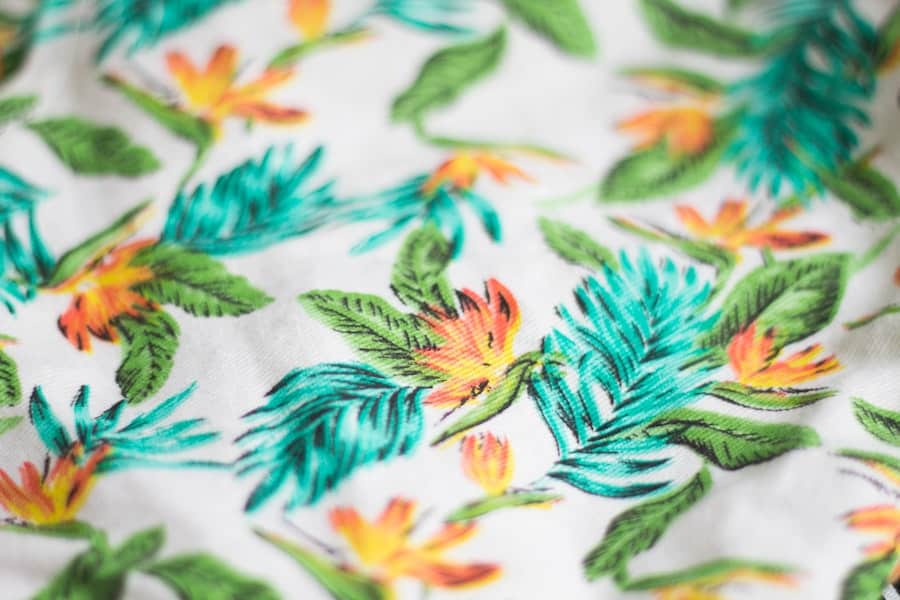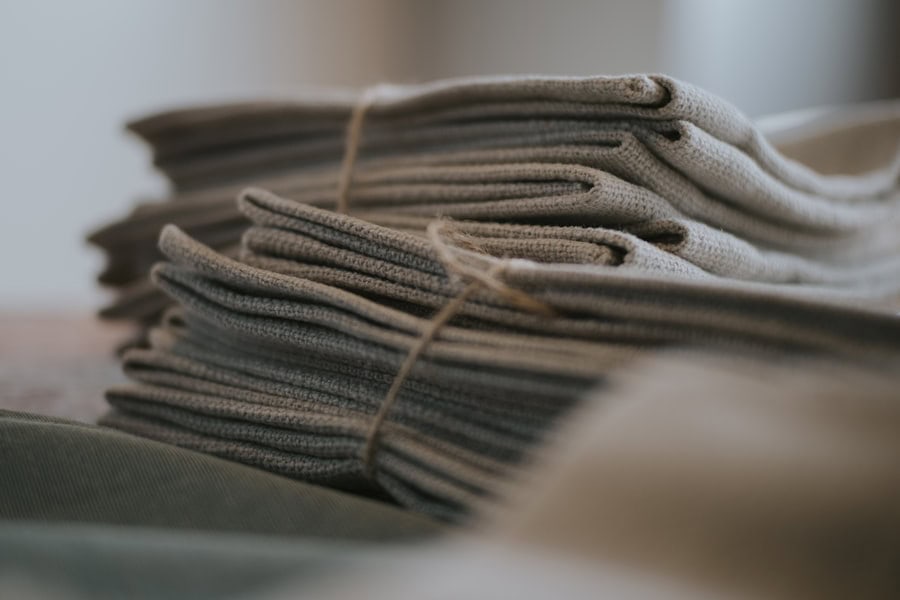The fashion industry, long criticized for its environmental impact, is undergoing a significant transformation through the adoption of green technology. This shift is not merely a trend but a necessary evolution in response to the pressing challenges posed by climate change, resource depletion, and social responsibility. Green technology in fashion encompasses a wide array of practices and innovations aimed at reducing the ecological footprint of clothing production and consumption.
From the materials used to the methods of production, every aspect of the fashion supply chain is being scrutinized and reimagined to align with sustainable principles. As consumers become increasingly aware of the environmental implications of their purchasing decisions, brands are compelled to adopt greener practices. This movement is not just about meeting consumer demand; it reflects a broader societal shift towards sustainability.
The integration of green technology in fashion is paving the way for a more responsible industry that prioritizes ecological balance and ethical considerations. By leveraging advancements in technology, designers and manufacturers are finding innovative solutions that not only minimize waste but also enhance the overall quality and longevity of garments.
Key Takeaways
- Green technology in fashion focuses on sustainable and environmentally friendly practices in the fashion industry.
- Sustainable materials and fabrics, such as organic cotton and recycled polyester, are being used to reduce the environmental impact of fashion production.
- Energy-efficient production processes, such as using renewable energy and optimizing manufacturing techniques, are being implemented to reduce carbon emissions.
- Recycling and upcycling initiatives are being promoted to minimize waste and extend the lifespan of clothing and textiles.
- Reduction of chemical and water usage in fashion production is being prioritized to minimize environmental pollution and water consumption.
Sustainable Materials and Fabrics
Sustainable Materials: A Greener Alternative
In contrast, sustainable materials are sourced with an emphasis on minimizing harm to the planet. Organic cotton, for instance, is cultivated without synthetic pesticides or fertilizers, significantly reducing its ecological footprint.
Innovative Fabrics: Breaking Down Naturally
Additionally, innovative fabrics like Tencel, derived from sustainably sourced wood pulp, offer biodegradable alternatives that break down naturally at the end of their life cycle.
Recycled Materials: Closing the Loop
Brands are increasingly utilizing post-consumer waste, such as plastic bottles and discarded textiles, to create new fabrics. For example, companies like Patagonia have pioneered the use of recycled polyester made from plastic bottles, effectively diverting waste from landfills while producing high-quality garments. This circular approach not only conserves resources but also reduces the demand for virgin materials, thereby lessening the overall environmental impact of fashion production.
Energy-efficient Production Processes

Energy consumption in the fashion industry is a critical concern, particularly given the energy-intensive nature of traditional manufacturing processes. The adoption of energy-efficient technologies is essential for reducing greenhouse gas emissions associated with clothing production. Many brands are now investing in renewable energy sources, such as solar and wind power, to fuel their operations.
For instance, some factories have installed solar panels to harness clean energy, significantly decreasing their reliance on fossil fuels. Moreover, advancements in technology have led to the development of more efficient machinery that consumes less energy while maintaining high production standards. Techniques such as 3D knitting and digital printing not only reduce waste but also require less energy compared to conventional methods.
By optimizing production processes and embracing energy-efficient technologies, the fashion industry can significantly lower its carbon footprint while still meeting consumer demands for quality and style.
Recycling and Upcycling Initiatives
Recycling and upcycling initiatives are becoming increasingly vital in addressing the issue of textile waste within the fashion industry.
Many brands are implementing take-back programs that encourage consumers to return their old clothing for recycling or repurposing.
For example, H&M’s Garment Collecting initiative allows customers to drop off unwanted clothes at their stores, which are then sorted for recycling or resale. Upcycling takes this concept a step further by creatively transforming discarded materials into new products. Designers are increasingly embracing upcycling as a way to reduce waste while showcasing their creativity.
Brands like Re/Done and E.L.
Reduction of Chemical and Water Usage
The fashion industry has long been associated with high levels of chemical usage and water consumption, particularly in dyeing and finishing processes. However, there is a growing movement towards reducing these harmful practices through innovative technologies and sustainable alternatives. Waterless dyeing techniques, such as digital printing and air dyeing, are gaining popularity as they significantly reduce water usage while maintaining vibrant colors.
For instance, companies like DyeCoo have developed waterless dyeing technology that uses supercritical carbon dioxide instead of water, drastically cutting down on water consumption. In addition to water conservation, there is an increasing emphasis on minimizing harmful chemicals used in textile production. Brands are adopting non-toxic dyes and finishes that are safer for both workers and consumers.
The Global Organic Textile Standard (GOTS) sets stringent criteria for organic textiles, including restrictions on harmful substances throughout the production process. By prioritizing chemical safety and water conservation, the fashion industry can mitigate its environmental impact while promoting healthier practices for workers and consumers alike.
Carbon Footprint Reduction

Reducing carbon emissions is a critical goal for the fashion industry as it grapples with its role in climate change. The carbon footprint of clothing encompasses various stages of production, from raw material extraction to transportation and retail. To address this issue, many brands are implementing strategies aimed at minimizing their carbon emissions throughout their supply chains.
One effective approach is localizing production to reduce transportation-related emissions. By sourcing materials closer to manufacturing facilities and selling products within local markets, brands can significantly decrease their overall carbon footprint. Additionally, some companies are committing to carbon neutrality by offsetting their emissions through various initiatives.
For example, brands like Allbirds have pledged to measure their carbon footprint and invest in projects that sequester carbon or promote renewable energy sources. This proactive approach not only demonstrates corporate responsibility but also encourages other companies within the industry to adopt similar practices. By prioritizing carbon footprint reduction, the fashion industry can play a pivotal role in combating climate change while fostering a more sustainable future.
Transparency and Ethical Supply Chains
Transparency within supply chains has become a crucial aspect of sustainable fashion as consumers demand greater accountability from brands regarding their sourcing and production practices. Ethical supply chains prioritize fair labor practices, safe working conditions, and environmental stewardship at every stage of production. Brands that embrace transparency often provide detailed information about their sourcing practices, labor conditions, and environmental impact through initiatives like sustainability reports or product labeling.
Organizations such as Fashion Revolution advocate for transparency by encouraging consumers to ask brands “Who made my clothes?
For instance, Everlane has built its brand around radical transparency by sharing details about its factories and pricing structures with consumers. By fostering transparency and ethical supply chains, the fashion industry can build trust with consumers while promoting responsible practices that benefit both people and the planet.
Consumer Education and Awareness
Consumer education plays a pivotal role in driving the shift towards sustainable fashion practices. As awareness of environmental issues grows, consumers are increasingly seeking information about the impact of their purchasing decisions on the planet. Brands that prioritize education often engage with their audiences through workshops, social media campaigns, and informative content that highlights sustainable practices and encourages mindful consumption.
For example, many brands are utilizing storytelling to connect with consumers on an emotional level while educating them about sustainability efforts. By sharing stories about artisans who create handmade products or showcasing the journey of recycled materials from waste to finished garment, brands can foster a deeper understanding of sustainability among consumers. Additionally, collaborations with influencers who advocate for sustainable living can amplify these messages and reach wider audiences.
Ultimately, consumer education empowers individuals to make informed choices that align with their values while supporting brands committed to sustainability. As awareness continues to grow, it is likely that consumer demand for sustainable practices will drive further innovation within the fashion industry, leading to a more responsible future for fashion as a whole.
In a recent article on

